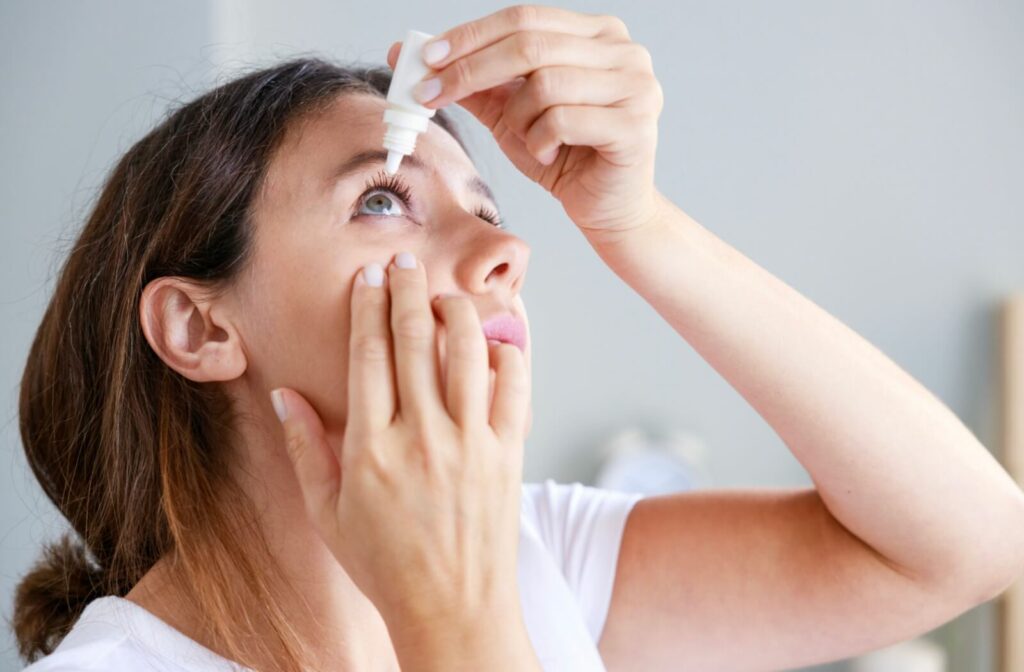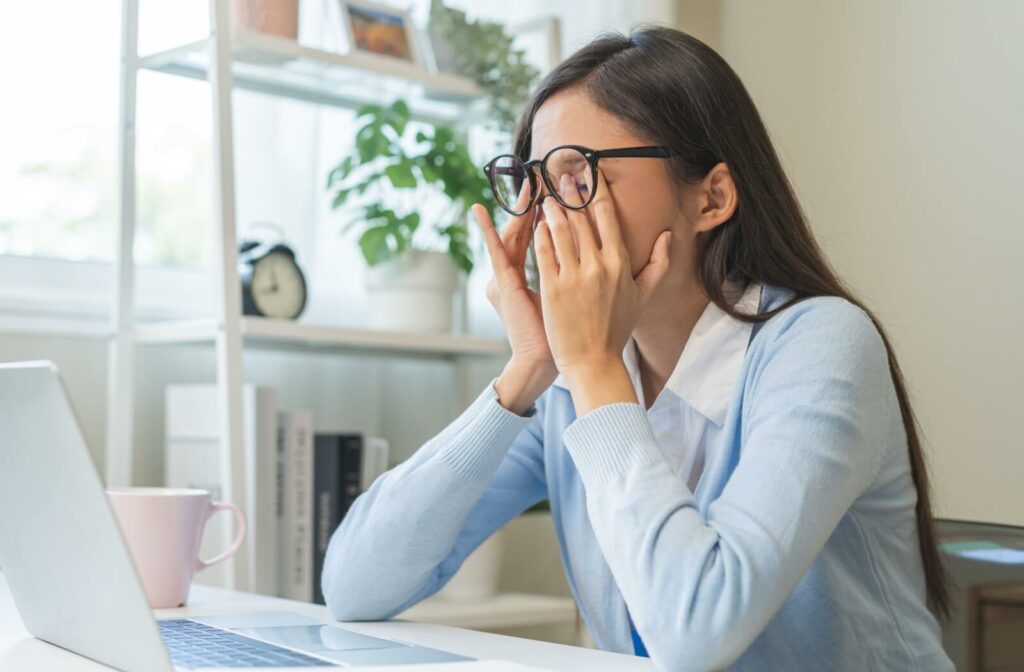Waking up to red, irritated eyes is never fun, but trying to figure out whether the culprit is dry eyes or allergies can be even more frustrating. Symptoms often overlap, which leaves many people uncertain about what they’re dealing with. However, allergies are caused by an external irritant and are usually accompanied by non-eye-related symptoms like sneezing, while dry eyes stem from an issue with tear production or quality.
Knowing what’s behind your eye discomfort is the first step toward finding relief. If you’re ever unsure, your optometrist can examine your symptoms and offer a treatment that works for you.
The Effects of Eye Allergies
Allergies make your immune system work overtime. When exposed to allergens like pollen, pet dander, or mold, your body reacts by releasing histamines to fight off what it sees as a threat. While your body’s intent is to protect you, histamines also cause inflammation and irritation, especially in sensitive areas like your eyes.
When your eyes are affected by allergies, you might notice symptoms such as:
- Redness
- Sensitivity to light
- Swelling of the eyelids or surrounding areas
- Watering, as your eyes try to flush out the allergen
During an allergic reaction, the conjunctiva, the thin membrane covering your eyes and inner eyelids, becomes inflamed. This can also cause itchiness, one of the telltale signs you’re dealing with allergies.
What Are Dry Eyes?
Dry eyes are a result of a problem with your tear film, the delicate balance of oils, water, and mucus that protects and hydrates your eyes. When this balance is disrupted, either because your eyes aren’t producing enough tears or because the tears they are making evaporate too quickly, dryness sets in.
The result is irritation and inflammation, which often only worsen without treatment. Common causes of dry eye include spending long periods staring at screens, aging, hormonal changes, and certain environmental conditions like wind or air conditioning.
Without proper moisture, dry eyes can cause uncomfortable symptoms such as:
- Burning or stinging sensations
- Blurry vision, especially after long periods of focusing
- Redness that can mimic the look of allergic irritation
- Sensitivity to light
- Discharge or crusting around the eyes, especially after sleep
While allergies are triggered by external irritants, dry eye is often a chronic condition that can evolve over time.

Allergies vs. Dry Eye: Spotting the Differences
Both conditions share symptoms like redness, irritation, tearing, and sensitivity to light, so how do you differentiate between them?
One hint is timing. Allergies are triggered by specific allergens, such as pollen or pet dander, and often appear alongside sneezing, itching, or other whole-body symptoms. When the allergen is removed, symptoms usually subside fairly quickly.
Dry eye, on the other hand, isn’t tied to any specific environmental trigger and tends to persist year-round. If you spend time in particularly dry, windy, or smoky environments, you might notice your symptoms worsen. Additionally, dry eye rarely affects other parts of your body; if your only symptoms are eye-related, you’re probably dealing with dry eyes.
Treating Allergies & Dry Eye
Whether your symptoms are caused by allergies or dry eyes, relief starts with a visit to an optometrist. We can evaluate your eyes and recommend a treatment plan tailored to your needs.
Treating Allergies
For eyes irritated by allergies, we may suggest a combination of the following strategies:
- Antihistamine eye drops to reduce itching and redness caused by histamines
- Cold compresses, which can soothe swollen or inflamed eyes
- Avoidance techniques, like staying indoors when pollen counts are high or using an air purifier to minimize exposure to allergens
- Oral medications that provide full-body allergy relief
Getting ahead of your allergies by identifying triggers and minimizing exposure can go a long way toward keeping your eyes comfortable. However, in an interesting twist, treatments like antihistamines can worsen dry eye, so make sure to get an official diagnosis so that you don’t accidentally make things worse.
Treating Dry Eye
Dry eye treatment is often more specialized since it involves addressing the root cause of your tear imbalance. We might recommend any of the following approaches:
- Artificial tears are used to hydrate and restore moisture to your eyes. Preservative-free options are gentle and safe for longer-term use.
- Prescription eye drops, like Restasis or Xiidra, which not only reduce inflammation but also help improve your eyes’ natural ability to produce tears.
- Warm compresses or heat masks to stimulate oil production from your meibomian glands and reduce tear evaporation.
In-clinic treatments may also be an option, depending on the severity of your symptoms. Intense Pulsed Light (IPL) and radio frequency (RF) can be effective options for managing chronic dry eye caused by meibomian gland dysfunction. These treatments work by unclogging glands, boosting oil production, and improving overall tear quality. We can refer you to a specialist if these treatments are right for you.
Say Goodbye to Eye Discomfort
Your eyes work hard every day, and they deserve the best care possible. Whether you’re dealing with allergies or dry eyes, clear and comfortable vision is within reach.
Book an appointment at Maple Ridge Eye Care today and let our friendly team help soothe your symptoms and protect your eye health. We’re here to help you see the world more comfortably, one blink at a time!

